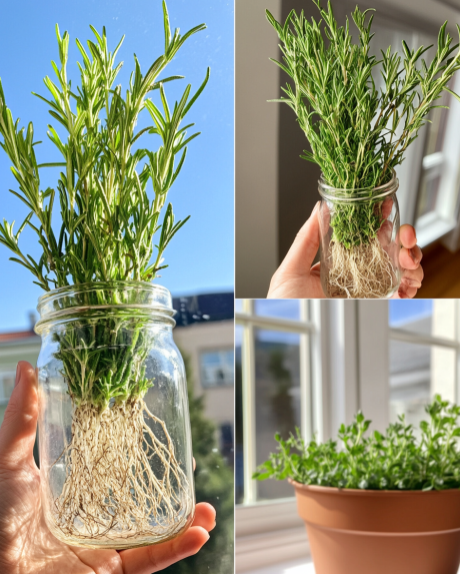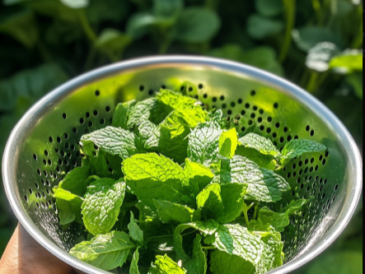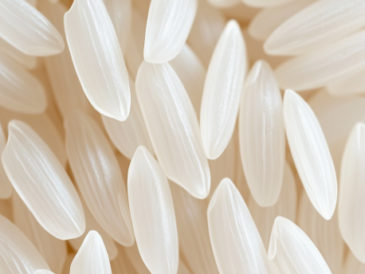Rosemary is a versatile and fragrant herb, commonly used in cooking, but it also offers medicinal and ornamental benefits. Growing rosemary from cuttings is a simple and effective method to multiply this plant and enjoy its fresh aroma at home. In this article, we’ll guide you step by step on how to grow rosemary from cuttings in water and then transplant them into pots.
Step 1: Choosing and Preparing Rosemary Cuttings ✂️🌱
The first step is to select healthy rosemary cuttings to ensure the best chances for successful propagation. Here’s how to do it:
- Choose a healthy mother plant: Pick a mature, robust rosemary plant free from diseases and pests.
- Take the cuttings: Using sharp, clean scissors or pruners, cut 10 to 15 cm (4 to 6 inches) long stems. Opt for younger, flexible stems, as they root more easily than woody ones.
- Prepare the cuttings: Strip the leaves from the bottom 5 cm (2 inches) of the stem, as roots will develop from these exposed nodes. 🌿
Step 2: Rooting the Cuttings in Water 💧
Water rooting is an easy method to encourage root growth from your cuttings. Follow these steps:
- Fill a container with water: Use a clear glass or jar and fill it with room-temperature water.
- Place the cuttings in water: Insert the rosemary cuttings into the water, making sure the stripped nodes are submerged, while keeping the leaves above the water to avoid rot.
- Change the water regularly: Replace the water every 2 to 3 days to prevent stagnation and mold growth.
- Watch for root growth: After 2 to 4 weeks, roots will start to sprout from the submerged nodes. Once the roots are about 5 cm (2 inches) long, your cuttings are ready for transplantation. 🌿👀
Step 3: Transplanting the Rooted Cuttings into Pots 🌿🏺
🎉 Congratulations! Your rosemary cuttings have sprouted roots. Now, let’s move to the exciting part—transplanting them into pots.
Once your cuttings have grown sturdy roots, it’s time to give them a permanent home in a pot. Here’s how:
- Prepare the pots: Choose pots with good drainage holes to prevent water from pooling. Fill them with well-draining potting soil, such as a mix of soil, sand, and compost.
- Plant the cuttings: Dig a small hole in the center of the pot, place the rooted cutting in the hole, and gently cover the roots with soil. Firm the soil around the base to secure the plant.
- Water after planting: Water the newly planted cuttings lightly to moisten the soil and help the roots settle in. Be careful not to overwater, as rosemary prefers slightly dry soil.
- Position the pots: Place the pots in a sunny location, as rosemary thrives in full sunlight. If growing indoors, a south-facing window or grow lights will ensure they get enough light. 🌞🪴
Step 4: Caring for Potted Rosemary 🌿🌞
Now that your rosemary cuttings are happily in their pots, follow these care tips to keep them growing strong:
- Moderate watering: Let the soil dry out between waterings. Overwatering can lead to root rot, so it’s essential to avoid soggy soil.
- Regular pruning: Trim your rosemary regularly to encourage bushy growth. Be cautious not to prune more than one-third of the plant at a time.
- Light fertilizing: Use a balanced fertilizer every 4 to 6 weeks during the growing season (spring and summer) to keep the plant healthy.
- Protect from frost: If you live in a cold climate, bring your pots indoors during winter or cover them with frost protection to prevent root damage. ❄️🌿
Conclusion
Growing rosemary from cuttings is a rewarding and cost-effective way to multiply your plants while adding a touch of green to your home or garden. By following these steps, you’ll enjoy a continuous supply of fresh rosemary, perfect for cooking, medicinal use, or simply for its delightful fragrance. 🌱🌸 Nothing beats the satisfaction of growing your own herbs from scratch, so why not give it a try and bring the beauty of rosemary into your space?




